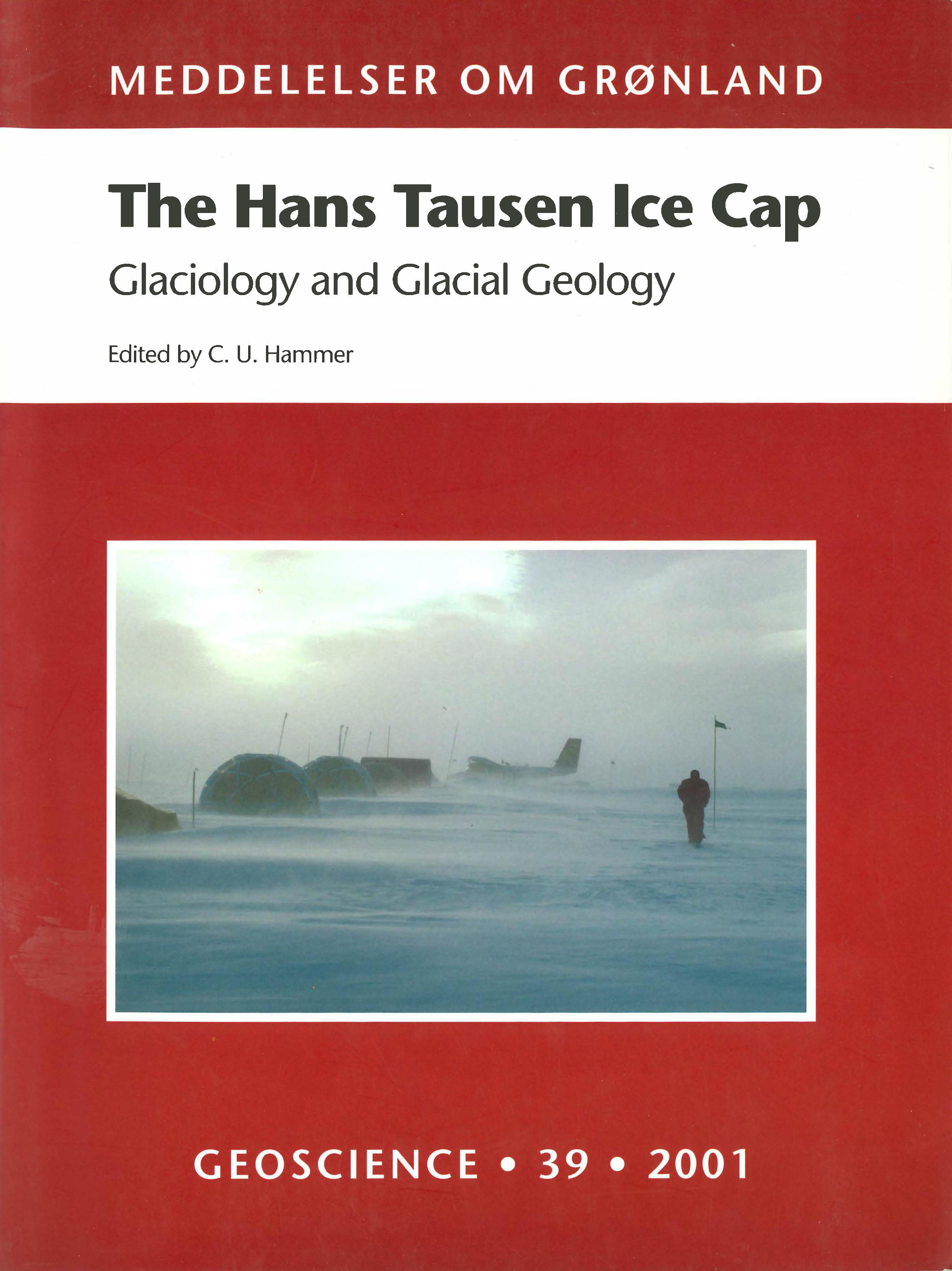Mass balance parameterisation for the Hans Tausen Iskappe, Peary Land, North Greenland
DOI:
https://doi.org/10.7146/moggeosci.v39i.140219Abstract
A mass balance model based on a positive degree-day approach is used to model the mass balance-elevation relationship for Hans Tausen Iskappe (82.5°N, 37.5°W). Model parameters are estimated by means of field data from a glacier basin in the north-east corner of the ice cap. The mass balance model is run for the total Hans Tausen Iskappe by using additional information on the snow fall distribution based on accumulation data from three local ice cores. The model indicates that, in the period 1975-1995, the total balance of Hans Tausen Iskappe was negative (–0.14 m/y of ice equivalent averaged over the icecap, corresponding to –104% of the annual average accumulation in the period). During the same period, the central part of the ice cap was very likely thickening. The sensitivity of the total mass balance to changing summer temperature is –0.17 m ice/y/K. With a 5% increase of snow fall per degree increase of summer temperature, the sensitivity is changed to –0.14 m ice/y/K. Model studies with larger deviations of the summer temperature from the present value indicate that a 5 K warmer temperature would result in ablation over the entire ice cap, which would then melt away completely in a few hundred years. Even a three-fold, simultaneous increase of the accumulation rate would not in general restore the mass balance, but might secure survival of small isolated icecaps in the northern mountainous landscape. The firn warming (the increase of the temperature at 10 m depth above the mean annual air temperature) of the central area of the ice cap is also studied. Extreme changes of climate conditions as those mentioned above, are needed in order to change the thermal regime of the central region of Hans Tausen Iskappe from cold to temperate. This indicates that Hans Tausen Iskappe was a cold glacier during most of its existence.
Downloads
Published
How to Cite
Issue
Section
License
Coypyright by the authors and the Commision for Scientific Research in Greenland / Danish Polar Center. No parts of the publications may be reproduced in any form without the written permission by the copyright owners.


